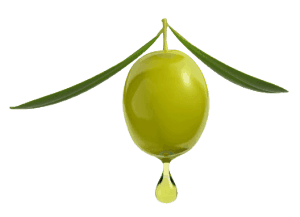Learn About High Phenolic EVOO
Extra Virgin Olive Oil
- Condition of olives
- Time and type of storage of the olive fruit between harvesting and pressing.
- Method of extraction (Temperature, solvents, etc)
- Storage of the olive oil

How do we know the necessary practices have been followed? All oils classified as EV have to be tested for their chemical and sensory features.
A chemical analysis validates that specific unwanted features are below a certain value as shown below:
| Type | Limit for EVOO |
| Acidity % (w/w) | 0.8 |
| Peroxides (mEq O2/kg ) | 20 |
| K232 | 2.5 |
| K270 | 0.22 |
| ΔΚ | 0.01 |
Are you curious about Myrolion’s chemical analysis? Click here!
Let’s see what those are.
When olive oil is exposed to the atmosphere, oxygen molecules dissolve into the oil in a process called oxidation. That’s bad news for olive oil. Peroxides are the main products of oxidation and severely degrade the flavor and nutritional value of the oil. Oxidation can also occur in the absence of exposure to air as well, in a process called auto-oxidation, because of free radicals that are present in the oil. Another way peroxides can increase is by exposure to light and the respective process is photo-oxidation. So, just like it says in the label, make sure to store it in a cool and dry place!
Another way to see how respectfully the product was created is through Spectroscopy. Specifically we test the absorbance of ultraviolet (UV) light by the olive oil in the wavelengths of 232 nm (K232) and 270 nm (K270). Those values are then mathematically processed and ΔΚ is calculated. Those three values provide us with very useful information regarding possible rancidity, oxidation and even more serious flaws such as refinement and adulteration.
| Feature |
Value for EVOO classification |
|
| Fruity | (Mf)>0 | Greater than 0 |
| Bitter | (Mb)>0 | Greater than 0 |
| Pungent | (Mp)>0 | Greater than 0 |
| Defects | (Md) | Exactly 0 |
The fruity characteristic reminds of a fresh sligthly unripe fruit. It will give you a pleasant experience and it can even make you drool, so watch out.
The bitter characteristic will generate an acrid sensation at the back of your tongue.
The pungent characteristic will make you experience a peppery sensation on your mouth, and even more likely in your throat.
The intensity of those flavors are also largely related to the variety of the olive fruit. Some varieties generate intense features while others make it easier to combine with other ingredients by being mild.
A big list of defects can be identified during a sensory analysis. Each defective flavor can be directly related to wrongdoings during the production and storage.
For instance, a trained connoisseur can identify the features “almond” , “green apple” and “artichoke” in Myrolion.
Although you might not be an olive oil expert, the good news is that you can still identify the basic features that will help you realize If the oil you’re tasting is actually EV or not.
Have you been paying attention or were you just scrolling down?

